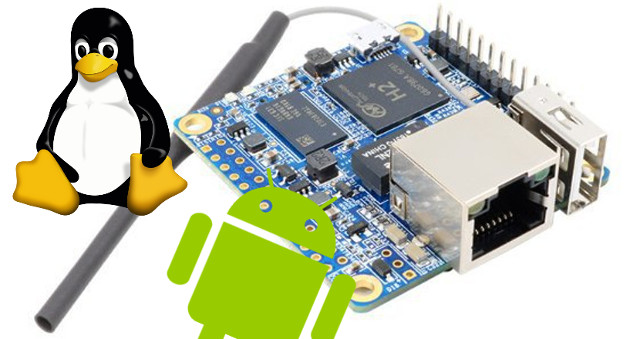Orange Pi Zero is an interesting little ARM Linux board thanks to its low price, but also because it features a new Allwinner H2 / H2+ quad core Cortex A7 processor very similar to Allwinner H3 minus the 4K video decoding part, as well as Allwinner XR819 WiFi module, which I have not seen on any other boards so far.
But hardware without software is pretty much useless, so developers will be happy to find out that Allwinner H2 SDK with Linux (lichee) and Android has been released or leaked, and it also includes the Allwinner XR819 WiFi driver.
You’ll find the SDK on Zoobab server with three main directory / files:
- Android folder – Android 4.4.2 SDK
- lichee folder – Linux 3.4.39 source code. However you’d probably better use Linux 3.4.113 currently released by sunxi-linux, or Linux mainline. The latter does have some limitations, and may or may not be suitable for your project.
- H2-V1.2.tar.bz2 – The tar file with both Android and lichee folder in case you want to download the full SDK on your computer
If another hardware comes with Allwinner XR819 WiFi module and you just need the Linux driver, you’ll find it in linux-3.4/drivers/net/wireless/xradio directory.
tkaiser managed to enable XR819 on armbian after disabling dhd driver:
|
1 2 3 4 5 6 7 8 9 10 11 12 13 14 15 16 17 18 19 20 21 22 23 24 25 26 27 28 |
tk@orangepizero:~$ iwconfig wlan0 wlan0 IEEE 802.11bgn ESSID:"Snort-Honeynet" Mode:Managed Frequency:2.412 GHz Access Point: BC:05:43:BE:C1:E7 Bit Rate=39 Mb/s Tx-Power=20 dBm Retry long limit:7 RTS thr:off Fragment thr:off Power Management:on Link Quality=66/70 Signal level=-44 dBm Rx invalid nwid:0 Rx invalid crypt:0 Rx invalid frag:0 Tx excessive retries:1 Invalid misc:0 Missed beacon:0 tk@orangepizero:~$ nmcli dev wifi list * SSID MODE CHAN RATE SIGNAL BARS SECURITY Snort-Honeynet Infra 1 54 Mbit/s 92 ▂▄▆█ WPA2 EasyBox-116D28 Infra 9 54 Mbit/s 84 ▂▄▆█ WPA1 WPA2 FRITZ!Box Fon WLAN 7360 Infra 1 54 Mbit/s 67 ▂▄▆_ WPA1 WPA2 DISTORTEDPEOPLE Infra 9 54 Mbit/s 55 ▂▄__ WPA1 WPA2 CubaLibre Infra 1 54 Mbit/s 45 ▂▄__ WPA2 tk@orangepizero:~$ cat /etc/modprobe.d/dhd.conf blacklist dhd tk@orangepizero:~$ ls -la /system/etc/firmware/ total 140 drwxr-xr-x 2 root root 4096 Nov 9 13:57 . drwxr-xr-x 3 root root 4096 Nov 9 13:55 .. -rw-r--r-- 1 tk tk 2308 Nov 9 13:57 boot_xr819.bin -rw-r--r-- 1 tk tk 126416 Nov 9 13:57 fw_xr819.bin -rw-r--r-- 1 tk tk 744 Nov 9 13:57 sdd_xr819.bin |

Jean-Luc started CNX Software in 2010 as a part-time endeavor, before quitting his job as a software engineering manager, and starting to write daily news, and reviews full time later in 2011.
Support CNX Software! Donate via cryptocurrencies, become a Patron on Patreon, or purchase goods on Amazon or Aliexpress





